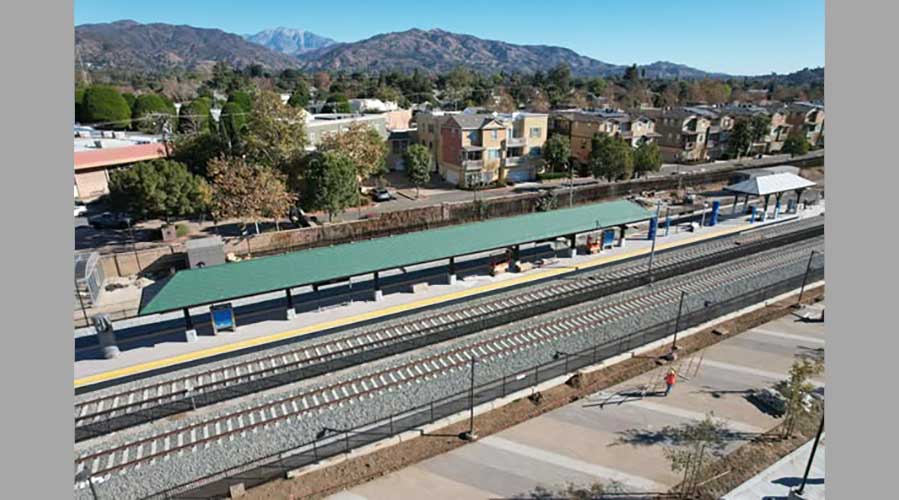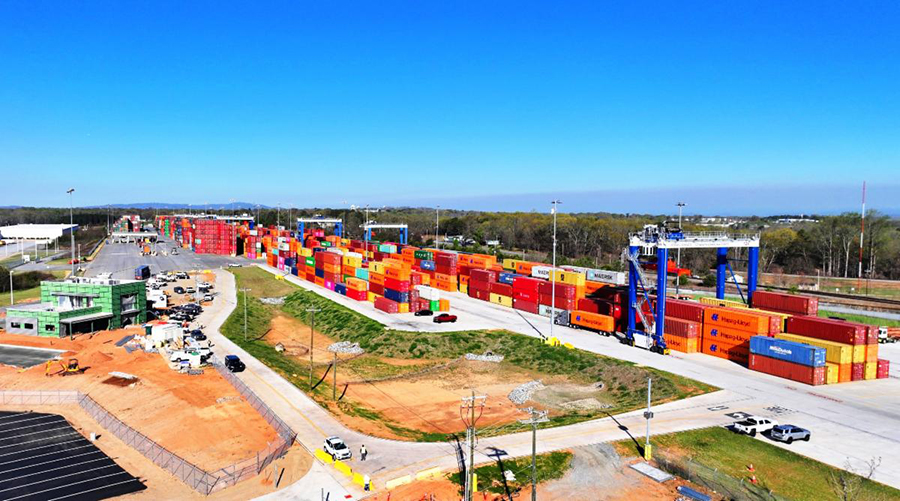Newsletter Sign Up
Stay updated on news, articles and information for the rail industry
Stay updated on news, articles and information for the rail industry
Rail News Home
Rail Industry Trends
Rail News: Rail Industry Trends
Thirty-five weeks into 2007, four of the seven Class Is have boosted average system velocity on a year-over-year basis. But six of the seven registered declines for the week ending Aug. 31, according to Bank of America Securities’ weekly rail service trends report.
During week No. 35, CSX Transportation’s system velocity averaged 20.6 mph, up 3 percent compared with train speed recorded in the same 2006 week. However, CSXT’s velocity declined 1.9 percent compared with the previous week.
“CSX train speeds have fallen six out of the last seven weeks,” said Bank of America Securities analyst Scott Flower in the report, adding that the railroad’s year-to-date velocity of 20.5 mph still is up 3.8 percent over 2006.
Norfolk Southern Corp., which hit its train speed peak about two months ago, also has posted declines in six of the past seven weeks, the report states. For Week No. 35, the railroad’s average system velocity of 21.3 mph dropped 0.9 percent compared with train speed from the same 2006 week. Through 35 weeks, NS’ velocity is down 0.3 percent year over year to 21.4 mph.
Soft traffic volumes are providing a favorable environment for other Class Is to register velocity gains.
In the West, BNSF Railway Co.’s velocity of 23.1 mph in week No. 35 increased 4.5 percent from the previous week but decreased 0.9 percent from the previous year. Through 35 weeks, the railroad’s train speed is up 2.6 percent to 23.2 mph compared with velocity through 2006’s first 35 weeks.
Union Pacific Railroad’s year-to-date train speed is up, too, increasing 1.4 percent to 21.6 mph. During week No. 35, the railroad’s average velocity reached 21.1 mph, rising 0.5 percent compared with train speed recorded in 2006’s 35th week.
At Kansas City Southern, train speed averaging 24.0 mph through 35 weeks was up 0.8 percent year over year, But for the latest week, velocity averaging 23.3 mph dropped 4.1 percent.
Meanwhile, Canadian Pacific Railway continues to post the largest velocity declines among the Class Is, according to the report. On a year-over-year basis, the railroad’s velocity through 35 weeks of 23.6 mph was down 6.4 percent and train speed in week No. 35 of 22.6 mph was down 10 percent.
“Network velocity at CPR declined a sharp 6.6 percent in the most recent week and nearly 11 percent over the last three,” said Flower, adding that the railroad had largely recovered from fluidity issues earlier in the year until the past few weeks.
Canadian National Railway Co.’s average velocity, although “remarkably consistent” so far in the third quarter, can’t match last year’s operational excellence, the report states. The railroad’s train speed through 35 weeks of 24.4 mph was down 5.8 percent and velocity in week No. 35 of 25.0 mph was down 3.1 percent year over year.
9/10/2007
Rail News: Rail Industry Trends
Class Is' average train speed losing some steam, Bank of America Securities says
advertisement
Thirty-five weeks into 2007, four of the seven Class Is have boosted average system velocity on a year-over-year basis. But six of the seven registered declines for the week ending Aug. 31, according to Bank of America Securities’ weekly rail service trends report.
During week No. 35, CSX Transportation’s system velocity averaged 20.6 mph, up 3 percent compared with train speed recorded in the same 2006 week. However, CSXT’s velocity declined 1.9 percent compared with the previous week.
“CSX train speeds have fallen six out of the last seven weeks,” said Bank of America Securities analyst Scott Flower in the report, adding that the railroad’s year-to-date velocity of 20.5 mph still is up 3.8 percent over 2006.
Norfolk Southern Corp., which hit its train speed peak about two months ago, also has posted declines in six of the past seven weeks, the report states. For Week No. 35, the railroad’s average system velocity of 21.3 mph dropped 0.9 percent compared with train speed from the same 2006 week. Through 35 weeks, NS’ velocity is down 0.3 percent year over year to 21.4 mph.
Soft traffic volumes are providing a favorable environment for other Class Is to register velocity gains.
In the West, BNSF Railway Co.’s velocity of 23.1 mph in week No. 35 increased 4.5 percent from the previous week but decreased 0.9 percent from the previous year. Through 35 weeks, the railroad’s train speed is up 2.6 percent to 23.2 mph compared with velocity through 2006’s first 35 weeks.
Union Pacific Railroad’s year-to-date train speed is up, too, increasing 1.4 percent to 21.6 mph. During week No. 35, the railroad’s average velocity reached 21.1 mph, rising 0.5 percent compared with train speed recorded in 2006’s 35th week.
At Kansas City Southern, train speed averaging 24.0 mph through 35 weeks was up 0.8 percent year over year, But for the latest week, velocity averaging 23.3 mph dropped 4.1 percent.
Meanwhile, Canadian Pacific Railway continues to post the largest velocity declines among the Class Is, according to the report. On a year-over-year basis, the railroad’s velocity through 35 weeks of 23.6 mph was down 6.4 percent and train speed in week No. 35 of 22.6 mph was down 10 percent.
“Network velocity at CPR declined a sharp 6.6 percent in the most recent week and nearly 11 percent over the last three,” said Flower, adding that the railroad had largely recovered from fluidity issues earlier in the year until the past few weeks.
Canadian National Railway Co.’s average velocity, although “remarkably consistent” so far in the third quarter, can’t match last year’s operational excellence, the report states. The railroad’s train speed through 35 weeks of 24.4 mph was down 5.8 percent and velocity in week No. 35 of 25.0 mph was down 3.1 percent year over year.


 LRW Honors Amtrak’s Acheson As Railway Woman Of The Year
LRW Honors Amtrak’s Acheson As Railway Woman Of The Year
 From Editor-In-Chief Foran: Of Gender Equity And Inclusion
From Editor-In-Chief Foran: Of Gender Equity And Inclusion
 Spotlight On Some Of Today’s Rail Safety Products
Spotlight On Some Of Today’s Rail Safety Products
 Women of Influence in Rail eBook
Women of Influence in Rail eBook
 railPrime
railPrime







